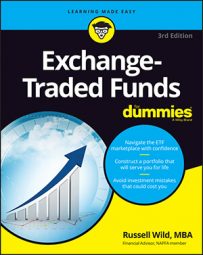In the beginning, most ETFs were traded on the American Stock Exchange. In July 2005, however, iShares decided to move its primary listings for 81 of its ETFs to the New York Stock Exchange, citing superior technology.
Then, in 2008, the American Stock Exchange was gobbled up by the New York Stock Exchange, which today goes by the name NYSE Arca. As a result, more than 90 percent of all U.S.-based ETFs today are listed on the NYSE Arca, with the remainder listed on the NASDAQ.
Note that there is a difference between an ETF being listed on, say, the NYSE Arca, and an ETF being traded on the NYSE Arca. Long ago, the terms were more or less synonymous. Today, an ETF or stock that is listed on the NYSE Arca can trade on any number of exchanges simultaneously.
In fact, the Securities Exchange Act of 1934 permits securities listed on any national securities exchange to be traded by all other such exchanges.
Does it matter to you on which exchange your ETF is listed? No, not really, except to the extent that the stock exchanges love ETFs, and if you are an ETF investor, they will love you.
The reason is fairly obvious: The stock exchanges make their money on, uh, exchanges of stocks. Mutual funds, per se, are not exchanged. ETFs are. And to promote ETFs, the stock exchanges offer some fairly cool stuff on their websites that you should know about.
NYSE Arca
Tracing its origins to 1792, the New York Stock Exchange (NYSE) Arca today lists about 8,000 securities, has about 3,000 member companies, and trades about 3.5 billion shares a day. Almost all ETFs are listed on the NYSE Arca.
NASDAQ
No bricks and mortar here — the NASDAQ is a uniquely electronic exchange. ETFs listed on the NASDAQ include a handful or two of the foreign iShares ETFs, a dozen of the PowerShares industry-sector ETFs, and the PowerShares QQQ Trust, which tracks the 100 biggest stocks on the NASDAQ and is one of the most beloved ETFs among day-traders.
The acronym NASDAQ, by the way, stands for National Association of Securities Dealers Automatic Quotation. The NASDAQ website has a number of very useful tools, including the ETF screener and (awesome, indeed) the ETF “Heatmap,” which allows you to see how 100 of the largest ETFs are faring on that particular day. Although the feature has great practical value, for an investment-world junkie, it offers a good rush.

